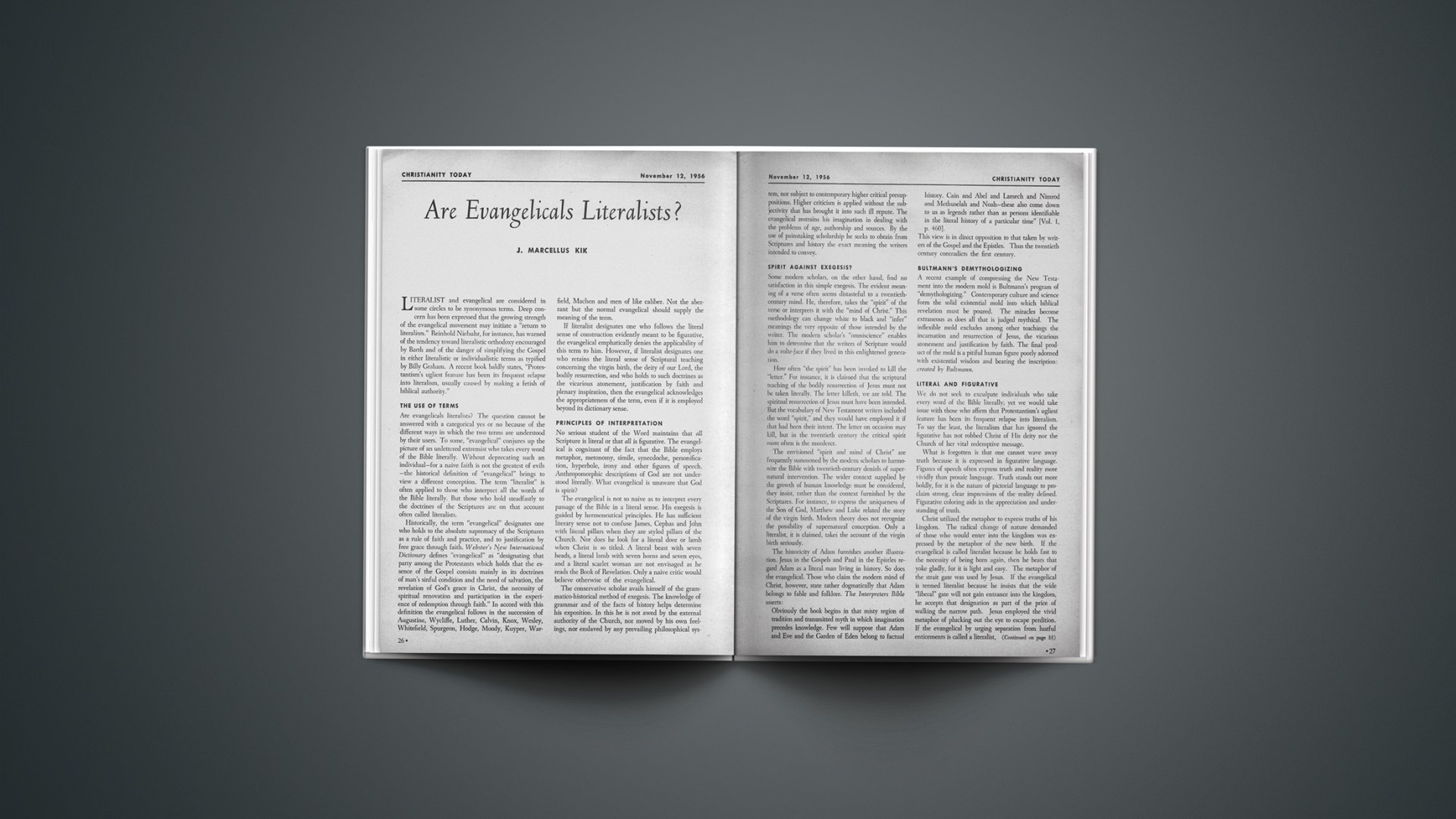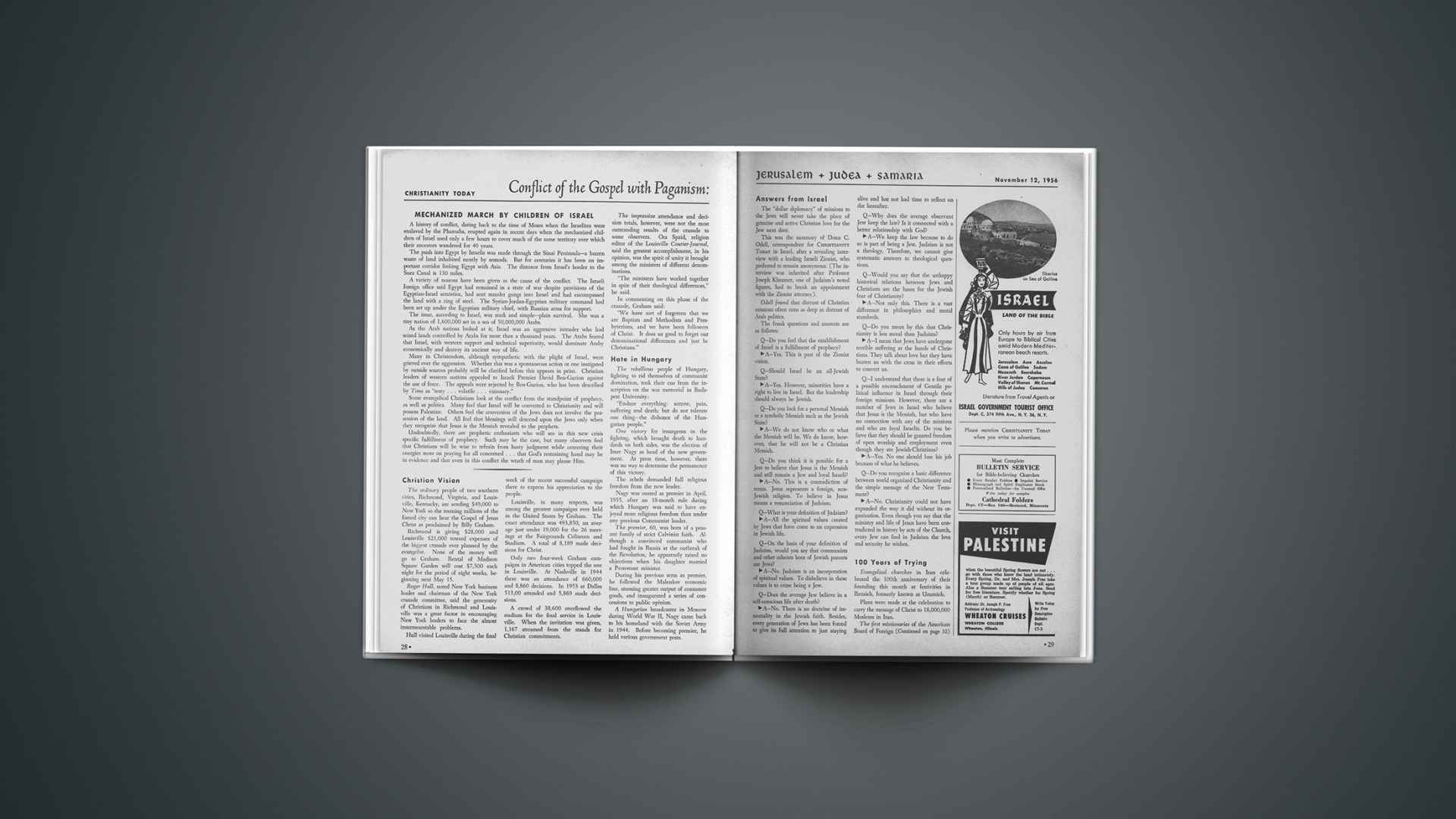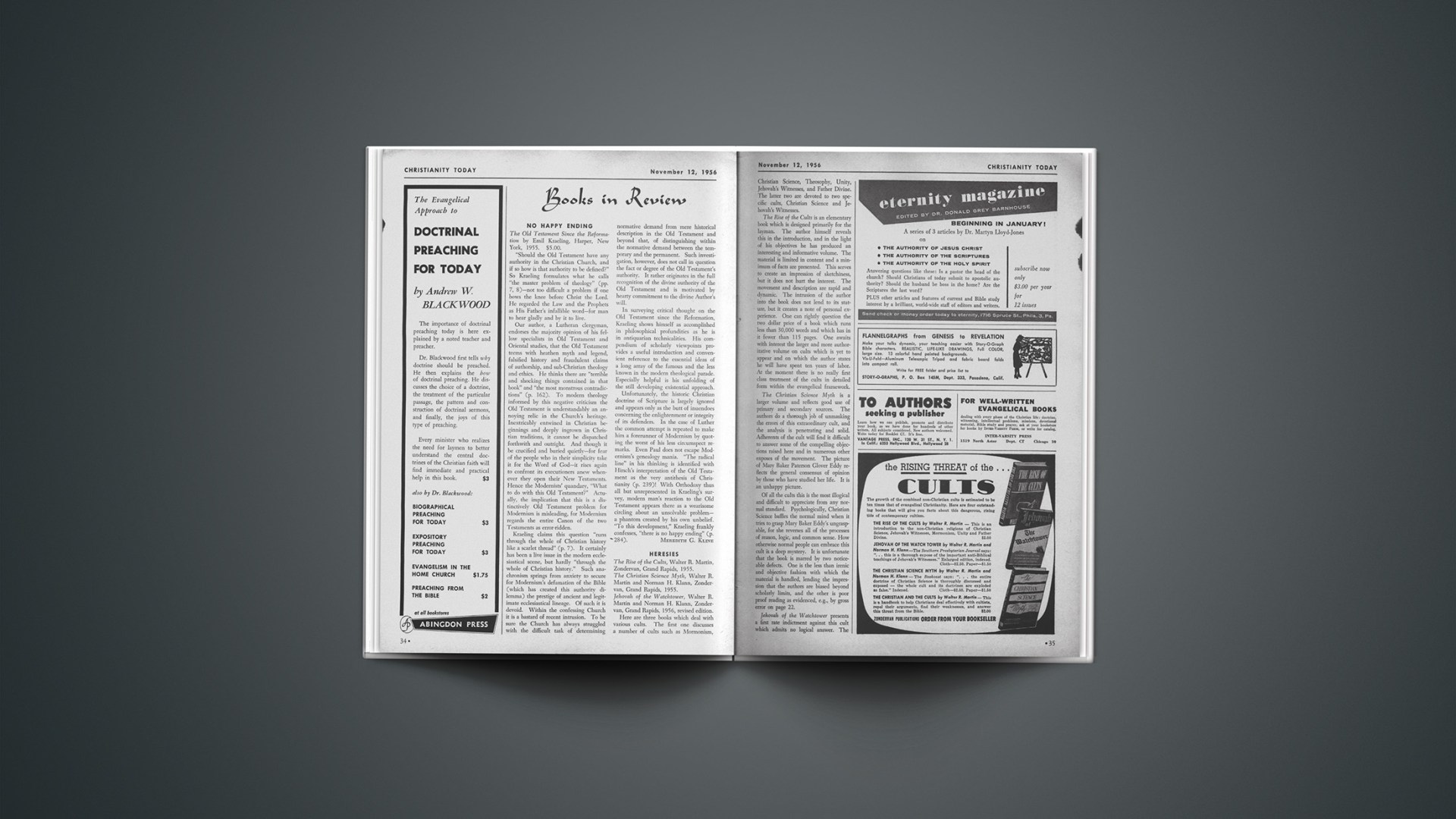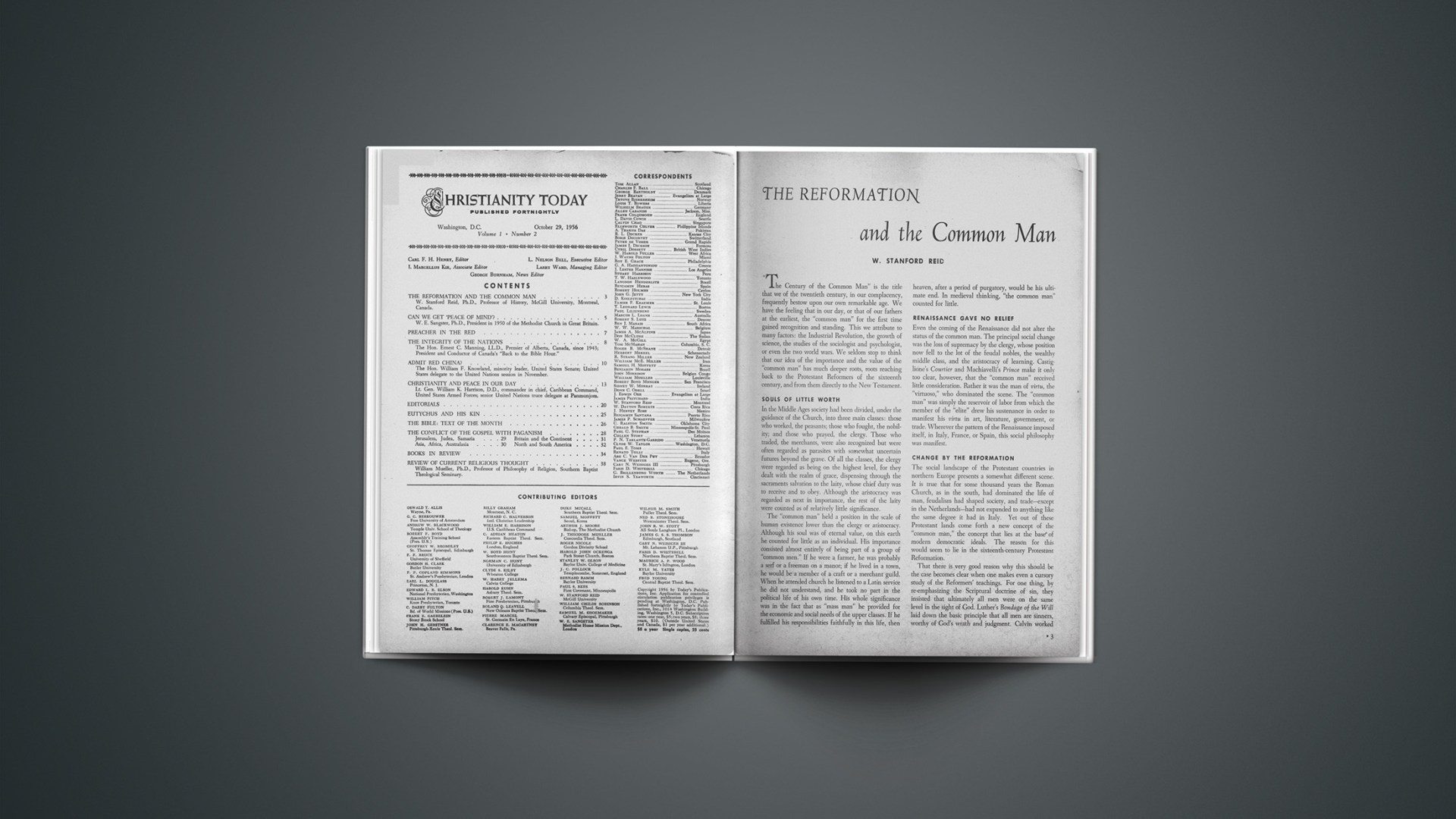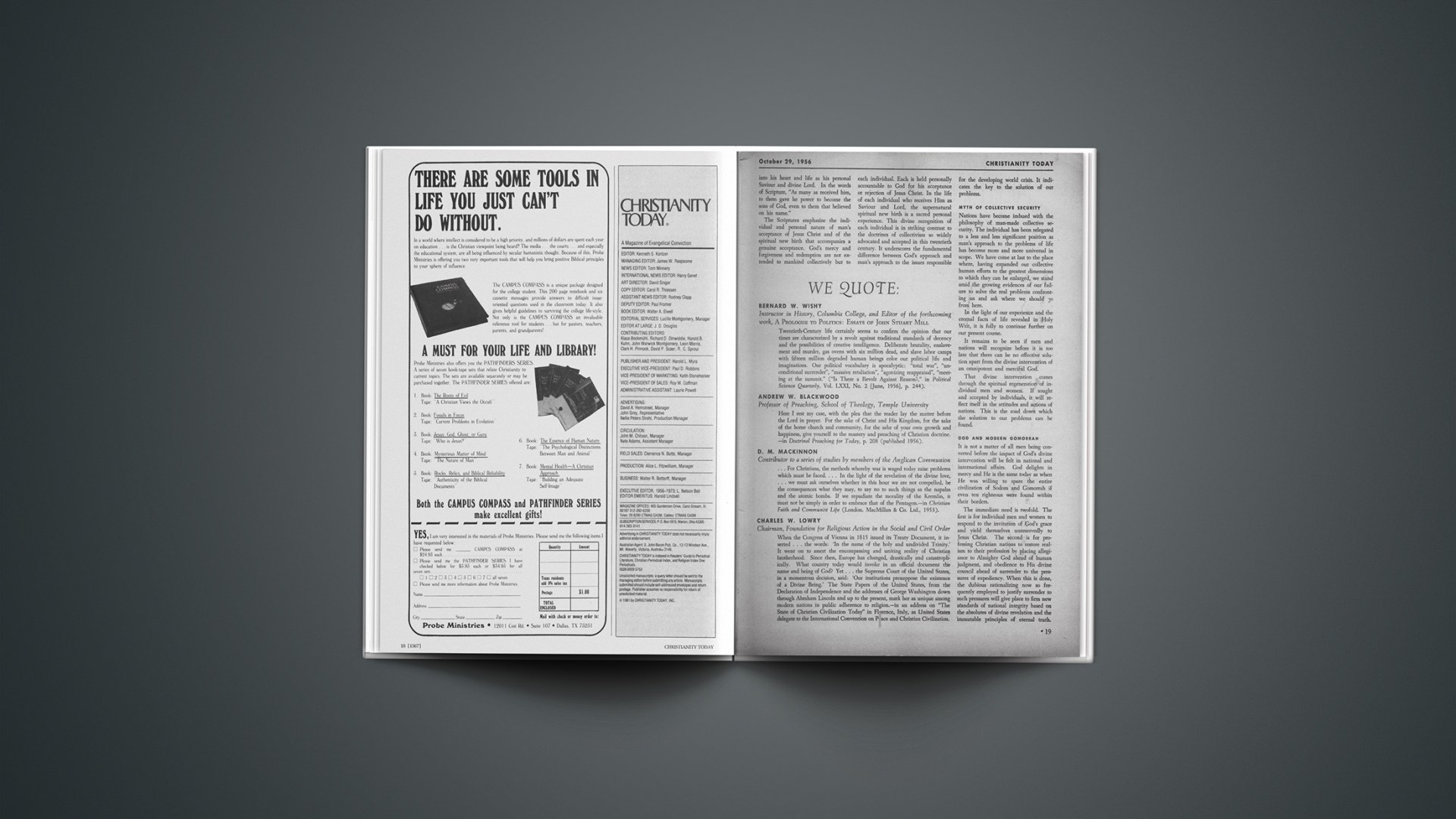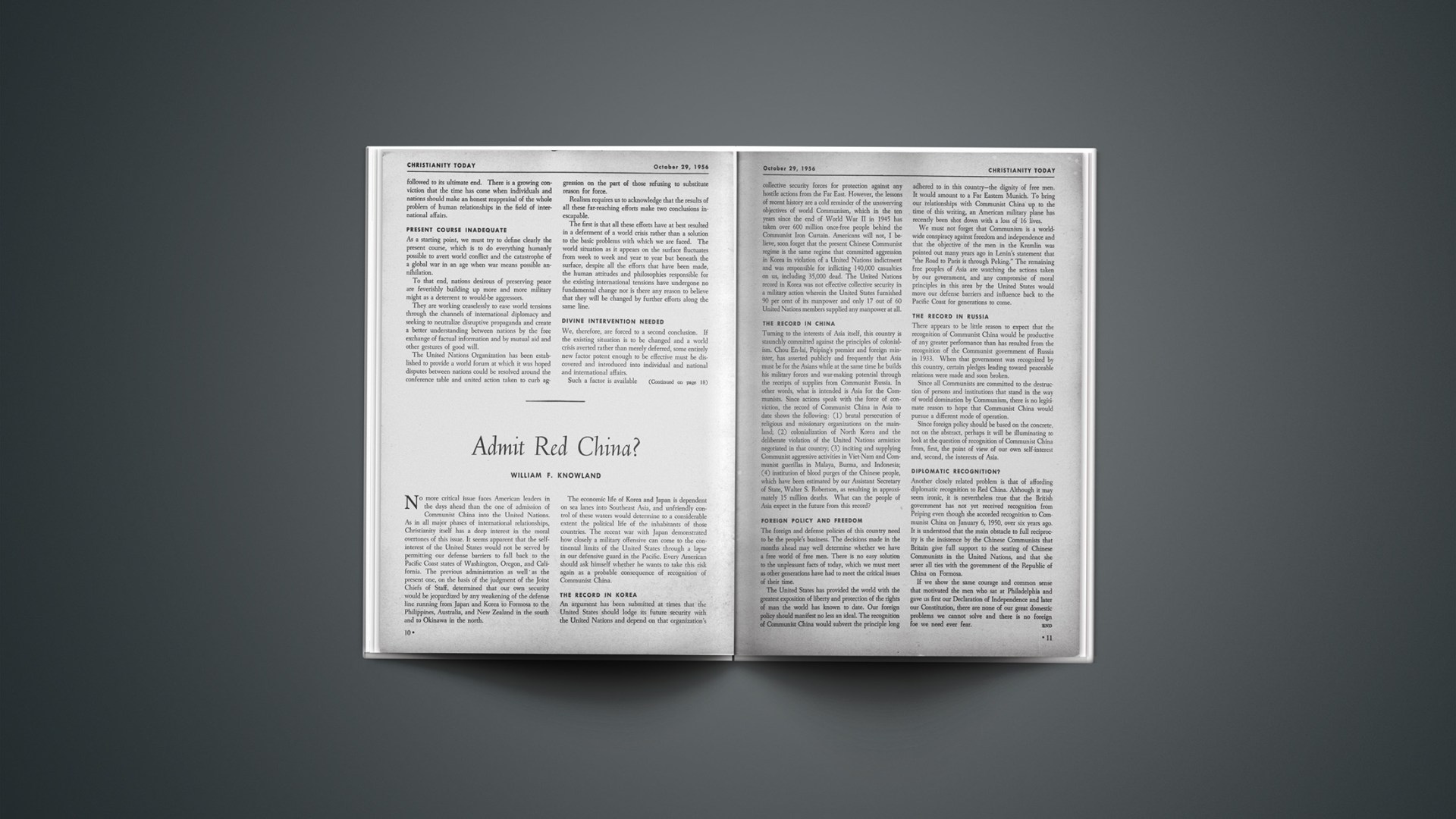Literalist and evangelical are considered in some circles to be synonymous terms. Deep concern has been expressed that the growing strength of the evangelical movement may initiate a “return to literalism.” Reinhold Niebuhr, for instance, has warned of the tendency toward literalistic orthodoxy encouraged by Barth and of the danger of simplifying the Gospel in either literalistic or individualistic terms as typified by Billy Graham. A recent book baldly states, “Protestantism’s ugliest feature has been its frequent relapse into literalism, usually caused by making a fetish of biblical authority.”
The Use of Terms
Are evangelicals literalists? The question cannot be answered with a categorical yes or no because of the different ways in which the two terms are understood by their users. To some, “evangelical” conjures up the picture of an unlettered extremist who takes every word of the Bible literally. Without deprecating such an individual—for a naive faith is not the greatest of evils—the historical definition of “evangelical” brings to view a different conception. The term “literalist” is often applied to those who interpret all the words of the Bible literally. But those who hold steadfastly to the doctrines of the Scriptures are on that account often called literalists.
Historically, the term “evangelical” designates one who holds to the absolute supremacy of the Scriptures as a rule of faith and practice, and to justification by free grace through faith. Webster’s New International Dictionary defines “evangelical” as “designating that party among the Protestants which holds that the essence of the Gospel consists mainly in its doctrines of man’s sinful condition and the need of salvation, the revelation of God’s grace in Christ, the necessity of spiritual renovation and participation in the experience of redemption through faith.” In accord with this definition the evangelical follows in the succession of Augustine, Wycliffe, Luther, Calvin, Knox, Wesley, Whitefield, Spurgeon, Hodge, Moody, Kuyper, Warfield, Machen and men of like caliber. Not the aberrant but the normal evangelical should supply the meaning of the term.
If literalist designates one who follows the literal sense of construction evidently meant to be figurative, the evangelical emphatically denies the applicability of this term to him. However, if literalist designates one who retains the literal sense of Scriptural teaching concerning the virgin birth, the deity of our Lord, the bodily resurrection, and who holds to such doctrines as the vicarious atonement, justification by faith and plenary inspiration, then the evangelical acknowledges the appropriateness of the term, even if it is employed beyond its dictionary sense.
Principles of Interpretation
No serious student of the Word maintains that all Scripture is literal or that all is figurative. The evangelical is cognizant of the fact that the Bible employs metaphor, metonomy, simile, synecdoche, personification, hyperbole, irony and other figures of speech. Anthropomorphic descriptions of God are not understood literally. What evangelical is unaware that God is spirit?
The evangelical is not so naive as to interpret every passage of the Bible in a literal sense. His exegesis is guided by hermeneutical principles. He has sufficient literary sense not to confuse James, Cephas and John with literal pillars when they are styled pillars of the Church. Nor does he look for a literal door or lamb when Christ is so titled. A literal beast with seven heads, a literal lamb with seven horns and seven eyes, and a literal scarlet woman are not envisaged as he reads the Book of Revelation. Only a naive critic would believe otherwise of the evangelical.
The conservative scholar avails himself of the grammatico-historical method of exegesis. The knowledge of grammar and of the facts of history helps determine his exposition. In this he is not awed by the external authority of the Church, nor moved by his own feelings, nor enslaved by any prevailing philosophical system, nor subject to contemporary higher critical presuppositions. Higher criticism is applied without the subjectivity that has brought it into such ill repute. The evangelical restrains his imagination in dealing with the problems of age, authorship and sources. By the use of painstaking scholarship he seeks to obtain from Scriptures and history the exact meaning the writers intended to convey.
Spirit Against Exegesis?
Some modern scholars, on the other hand, find no satisfaction in this simple exegesis. The evident meaning of a verse often seems distasteful to a twentieth-century mind. He, therefore, takes the “spirit” of the verse or interprets it with the “mind of Christ.” This methodology can change white to black and “infer” meanings the very opposite of those intended by the writer. The modern scholar’s “omniscience” enables him to determine that the writers of Scripture would do a volte-face if they lived in this enlightened generation.
How often “the spirit” has been invoked to kill the “letter.” For instance, it is claimed that the scriptural teaching of the bodily resurrection of Jesus must not be taken literally. The letter killeth, we are told. The spiritual resurrection of Jesus must have been intended. But the vocabulary of New Testament writers included the word “spirit,” and they would have employed it if that had been their intent. The letter on occasion may kill, but in the twentieth century the critical spirit more often is the murderer.
The envisioned “spirit and mind of Christ” are frequently summoned by the modern scholars to harmonize the Bible with twentieth-century denials of supernatural intervention. The wider context supplied by the growth of human knowledge must be considered, they insist, rather than the context furnished by the Scriptures. For instance, to express the uniqueness of the Son of God, Matthew and Luke related the story of the virgin birth. Modern theory does not recognize the possibility of supernatural conception. Only a literalist, it is claimed, takes the account of the virgin birth seriously.
The historicity of Adam furnishes another illustration. Jesus in the Gospels and Paul in the Epistles regard Adam as a literal man living in history. So does the evangelical. Those who claim the modern mind of Christ, however, state rather dogmatically that Adam belongs to fable and folklore. The Interpreters Bible asserts:
Obviously the book begins in that misty region of tradition and transmitted myth in which imagination precedes knowledge. Few will suppose that Adam and Eve and the Garden of Eden belong to factual history. Cain and Abel and Lamech and Nimrod and Methuselah and Noah—these also come down to us as legends rather than as persons identifiable in the literal history of a particular time” [Vol. 1, p. 460],
This view is in direct opposition to that taken by writers of the Gospel and the Epistles. Thus the twentieth century contradicts the first century.
Bultmann’s Demythologizing
A recent example of compressing the New Testament into the modern mold is Bultmann’s program of “demythologizing.” Contemporary culture and science form the solid existential mold into which biblical revelation must be poured. The miracles become extraneous as does all that is judged mythical. The inflexible mold excludes among other teachings the incarnation and resurrection of Jesus, the vicarious atonement and justification by faith. The final product of the mold is a pitiful human figure poorly adorned with existential wisdom and bearing the inscription: created by Bultmann.
Literal and Figurative
We do not seek to exculpate individuals who take every word of the Bible literally; yet we would take issue with those who affirm that Protestantism’s ugliest feature has been its frequent relapse into literalism. To say the least, the literalism that has ignored the figurative has not robbed Christ of His deity nor the Church of her vital redemptive message.
What is forgotten is that one cannot wave away truth because it is expressed in figurative language. Figures of speech often express truth and reality more vividly than prosaic language. Truth stands out more boldly, for it is the nature of pictorial language to proclaim strong, clear impressions of the reality defined. Figurative coloring aids in the appreciation and understanding of truth.
Christ utilized the metaphor to express truths of his kingdom. The radical change of nature demanded of those who would enter into the kingdom was expressed by the metaphor of the new birth. If the evangelical is called literalist because he holds fast to the necessity of being born again, then lie bears that yoke gladly, for it is light and easy. The metaphor of the strait gate was used by Jesus. If the evangelical is termed literalist because he insists that the wide “liberal” gate will not gain entrance into the kingdom, he accepts that designation as part of the price of walking the narrow path. Jesus employed the vivid metaphor of plucking out the eye to escape perdition. If the evangelical by urging separation from lustful enticements is called a literalist, he bears that title with patience and long-suffering.
Truth in Metaphor
One of the beautiful metaphors describing Christ is that of the Lamb. The evangelical accepts the biblical content of the term. Through knowledge of Old Testament revelation he learns the significance of John the Baptist’s cry, “Behold the lamb of God that taketh away the sin of the world.” The apostle Peter sharpens the content of the metaphor in writing that we are redeemed with the precious blood of Christ, as of the lamb without blemish and without spot. The evangelical recognizes both the figure of speech and the truth expressed by it. He does not take the lamb literally, but he does take literally the truth portrayed by it.
The rewards and punishments of the other world are described by the sacred writers in vivid terms and phrases usually employed to signify what physically affects us in this present life. The rewards mentioned in the second and third chapters of Revelation are these: fruit of the tree of life, crown of life, white stone, white garment, pillar in the temple. These are figures of speech signifying spiritual realities. Punishments are portrayed by such vivid terms as Gehenna of fire, weeping and gnashing of teeth, fire unquenchable, chains of darkness, lake of fire burning with brimstone. Figures of speech? Yes, but portraying fearful and awful punishment. Acknowledging them to be figurative does not do away with the reality. If these are but the figures, how terrible is the reality!
Spirit and Scripture
The evangelical considers the Bible to be authoritative in faith and practice. He continues the formal principle of the Reformation. This position has been clearly and adequately stated in the creeds of historic churches. With the Reformers he accepts the authority of the Scriptures. He does not invoke an authority of the Spirit that contradicts the Scriptures. The Westminster Confession of Faith well states of the Bible that “our full persuasion and assurance of the infallible truth and divine authority thereof, is from the inward work of the Holy Spirit, bearing witness by and with the word in our hearts” (Chap. 1, Sec. 5).
Because the Scriptures are authoritative the evangelical labors to obtain the precise meaning that the sacred writers intend to convey. He acknowledges his dependence upon the Holy Spirit but not in the sense of certain Pietists who disregarded rules of grammar and the common meaning and usage of words because of inner light claimed to be received of the Holy Spirit. The same principles, the same grammatical process, and the exercise of common sense and reason are applied to the Scriptures that are applied to the interpretation of other books.
Are evangelicals literalists? If the historical and dictionary sense of literalist is meant, the answer must be an emphatic no. If the loose sense is accepted that a literalist is one who accepts the teachings of the Bible as authoritative, then the answer is an emphatic yes.
J. Marcellus Kik is associate editor of Christianity Today.

